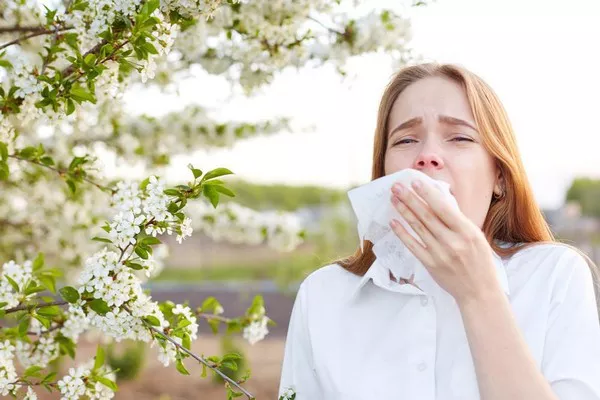As the seasons change, so does the composition of airborne allergens. For many individuals, tree pollen is a significant trigger of seasonal allergies, causing symptoms like sneezing, itchy eyes, runny nose, and congestion. To help you stay informed and better manage your allergies, this comprehensive guide will explore the current tree pollen landscape, highlighting the trees whose pollen is at its peak right now. Understanding the specific trees responsible for your allergy symptoms can be a game-changer in your quest for relief.
A Seasonal Overview
Tree pollen allergies, often referred to as hay fever or allergic rhinitis, typically occur during the spring and early summer months. This is when many trees release their pollen into the air as part of their reproductive process. However, the exact timing and intensity of tree pollen season can vary based on factors like geographic location and weather conditions.
Identifying the Culprits: Trees and Their Pollen
Several tree species are known for their pollen production and allergenic potential. Here are some of the most common trees associated with seasonal allergies and their peak pollen periods:
1. Oak Trees:
Peak Pollen Period: Oak trees are known for releasing pollen in the spring, typically from late March to early June, depending on the region. Peak pollen levels often occur in April and May.
Pollen Characteristics: Oak pollen is often heavy and granular, making it less likely to remain suspended in the air for extended periods. However, it can still trigger allergy symptoms upon inhalation.
2. Birch Trees:
Peak Pollen Period: Birch trees release their pollen in the early spring, typically from March to May, with peak levels in April.
Pollen Characteristics: Birch pollen is fine and lightweight, easily carried by the wind over long distances. This characteristic contributes to its allergenic potential.
3. Maple Trees:
Peak Pollen Period: Maple trees, including both sugar and red maples, release their pollen in the spring, generally from March to May, with peak levels in April.
Pollen Characteristics: Maple pollen is relatively light and can become airborne easily, potentially leading to allergy symptoms in sensitive individuals.
4. Pine Trees:
Peak Pollen Period: Pine trees, which include various species like pine, spruce, and fir, typically release pollen in the late spring to early summer, from April to June.
Pollen Characteristics: Pine pollen is moderately heavy and often falls to the ground rather than remaining airborne. However, it can still affect those in close proximity.
5. Cedar Trees:
Peak Pollen Period: Cedar trees, including the Eastern Red Cedar, release pollen from late fall to early winter, typically from October to December.
Pollen Characteristics: Cedar pollen is fine and can become a significant allergen during its peak season, causing symptoms known as “cedar fever.”
6. Juniper Trees:
Peak Pollen Period: Juniper trees, which are part of the cypress family, release pollen in the winter months, typically from January to March.
Pollen Characteristics: Juniper pollen is fine and can lead to allergic reactions in individuals sensitive to it.
Regional Variations
It’s important to note that the timing and prevalence of tree pollen can vary significantly by region. For instance, areas with milder climates may experience an earlier onset of tree pollen season, while cooler regions may see a delayed start. Additionally, the types of trees predominant in a region can influence the pollen landscape.
Managing Tree Pollen Allergies
If you’re among the millions of people affected by tree pollen allergies, there are several strategies you can employ to minimize symptoms and improve your quality of life during peak pollen periods:
Monitor Pollen Counts: Keep an eye on local pollen counts through weather websites, apps, or news reports. Knowing when specific tree pollens are high can help you plan outdoor activities accordingly.
Stay Indoors During Peaks: On days when tree pollen levels are high, especially during peak periods, consider staying indoors as much as possible to reduce exposure.
Use Air Purifiers: Investing in a high-quality air purifier with a HEPA filter can help remove pollen particles from indoor air.
Keep Windows Closed: During high-pollen days, keep windows and doors closed to prevent pollen from entering your home.
Change Clothes After Being Outdoors: If you spend time outdoors during peak pollen periods, change your clothes and shower to remove pollen from your body and hair.
Medications: Over-the-counter antihistamines, decongestants, and nasal corticosteroids can help alleviate allergy symptoms. Consult with a healthcare provider for personalized recommendations.
Allergen Immunotherapy: For severe tree pollen allergies, allergen immunotherapy (allergy shots) may be a long-term solution to reduce sensitivity.
Conclusion
As tree pollen levels fluctuate throughout the year, staying informed about the current pollen landscape is essential for managing seasonal allergies effectively. By identifying the specific tree species responsible for your symptoms and taking proactive measures to reduce exposure, you can enjoy the changing seasons with greater comfort and ease. Consult with an allergist or healthcare provider for personalized guidance on managing your tree pollen allergies.


